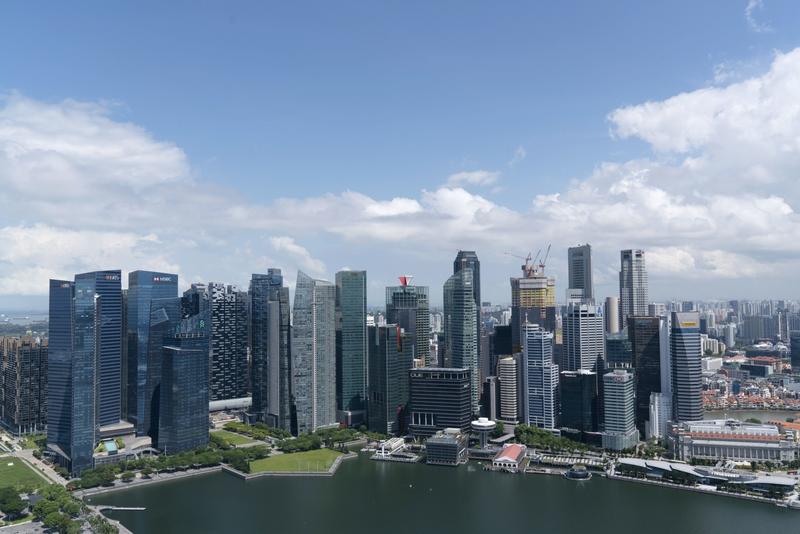 Buildings stand in the central business district in Singapore on July 6, 2020. (PHOTO / BLOOMBERG)
Buildings stand in the central business district in Singapore on July 6, 2020. (PHOTO / BLOOMBERG)
Singapore’s economic situation remains dire amid the coronavirus pandemic, impacted by what could be lasting shifts in global demand and to supply chains, according to the city-state’s central bank.
“Even if subsequent waves of infection are more limited” globally, it’s not clear whether confidence in resuming normal economic activity will be restored, Ravi Menon, managing director of the Monetary Authority of Singapore, said at a briefing Thursday following the release of the central bank’s annual report. “People may be slower to return to previous patterns of work as long as the virus is still circulating.”
Singapore’s export-reliant economy has been slammed by coronavirus travel restrictions, disruptions to supply chains and government-imposed lockdowns that have pummeled consumption.
Gross domestic product plunged an annualized 41.2 percent in the second quarter from the first three months of the year, the biggest quarterly contraction on record. The government expects the economy to shrink 4 percent to 7 percent this year, though Menon on Thursday noted both upside and downside risks to that forecast.
AlSO READ: Singapore slumps into recession with record 41.2% GDP plunge
Stimulus Steps
Menon said roughly 12 percent of Singapore’s economy is at the “epicenter” of the impact from the pandemic. Travel-related sectors -- including airlines, accommodation, arts and entertainment, and recreation -- account for about 4 percent of Singapore’s GDP and have exerted the “largest drag on economic growth,” he added.
“The financial services sector in particular has done reasonably well” amid the pandemic, Menon said, with a “good part” of financial activity moving online. Technology enabled 85 percent of finance workers to work from home during Singapore’s partial lockdown, with minimal disruption.
Singapore has rolled out about S$93 billion (US$67 billion) in fiscal support to alleviate the economic impact of the virus and containment measures, including wage subsidies, rental relief, government fee waivers and jobs training opportunities.
The MAS, which uses the currency as its main policy tool rather than interest rates, took unprecedented easing steps in March to help cushion the economy. It lowered the midpoint of the currency band and reduced the slope to zero to allow for a weaker exchange rate that could support export-driven growth.
READ MORE: Singapore's staycations can't fill US$20b tourism gap
Other highlights from the briefing:
Weak external demand and “continued small frictions” in global supply chains will continue to weigh on Singapore’s trade, but exports of biological and electronic products have held up better than expected
The central bank aims to curb disinflationary pressures that could destabilize the economy
MAS doesn’t seek to enhance export competitiveness by weakening the exchange rate
About US$21 billion has been provided through a US dollar facility MAS set up following an arrangement with the US Federal Reserve
MAS sees no need to adjust measures introduced over the past decade to cool the property market, which have helped temper the downturn’s impact on property prices
Higher corporate and household debt levels entering 2021 will weigh on growth and could be a “source of vulnerability” for the economy


